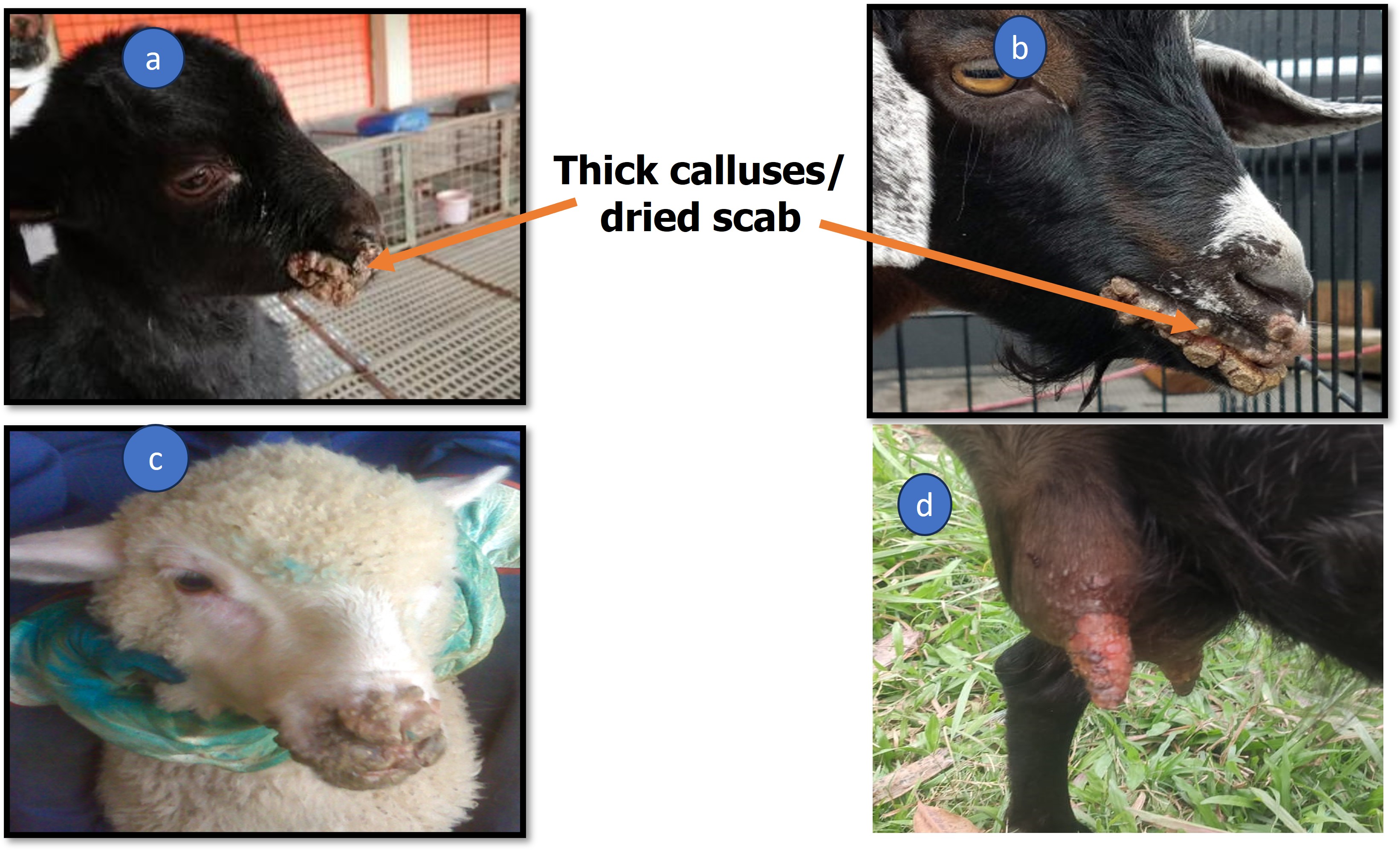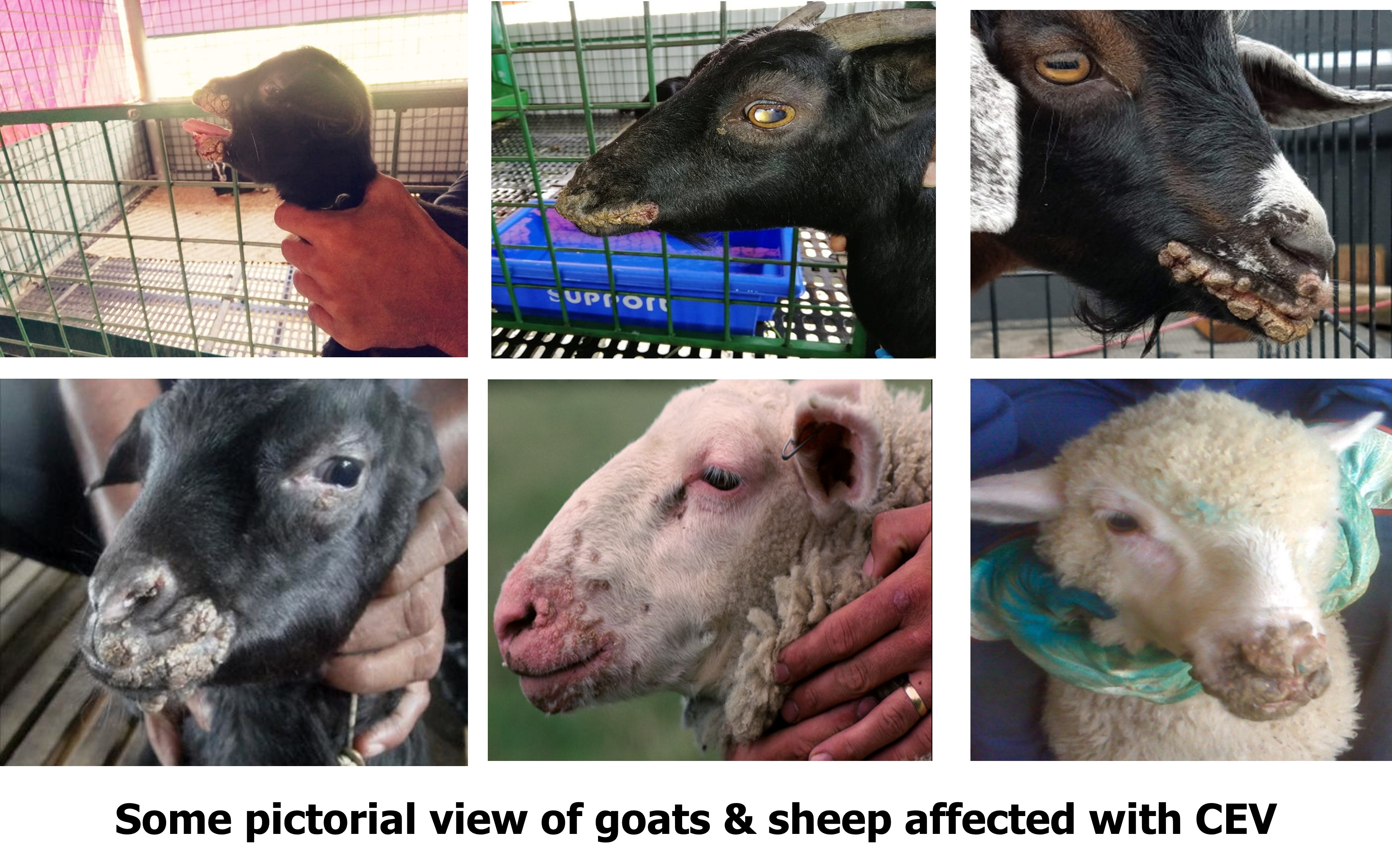Development of Contagious Ecthyma vaccine seed from circulating local isolates
Contagious ecthyma is a viral disease affecting sheep, goats, domesticated and wild ruminants worldwide, including in Bangladesh. It is also known as sore mouth, contagious pustular dermatitis, or scabby mouth. Goats are more severe and suffer from proliferative lesions on their mouth and muzzle. CE affects dogs, cattle, camels, and wild animals and is endemic in countries where these animals are common. Outbreaks of CE have frequently occurred in Bangladesh, and its economic importance is significant due to its severe impacts on young lambs and kids. As there is no suitable antiviral therapeutic schedule, vaccination is the only option for effective control and eradication.
Activity-1: Identification and molecular characterization of CEV from CE suspected field samples. A total 92 scab tissue samples were collected from various outbreak areas in Bangladesh, including Jashore, Chuadanga, Satkhira, Jhinaidah, Meherpur, Chattragram, Capainowabgonj, and Dhaka. DNA was extracted using a DNA extraction kit, and a polymerase chain reaction (PCR) was performed to amplify the VIR and B2L genes of the CE virus. Activity -2: Isolation, propagation and attenuation of CEV in primary lamb testis cell and MDBK cell line for the development of vaccine. Primary lamb testicular cells (LTC) were prepared from 1-7-day-old lamb testis at SAARC RLDL laboratory for PPR in BLRI. Inoculum was prepared (OIE, 2017) from PCR-positive samples and 0.5 ml of inoculum was inoculated into a 25 cm2 cell culture flask containing primary LTC. For isolation of Contagious Ecthyma Virus (CEV), each sample was inoculated into primary LTC, and five blind passages were conducted. The virus-inoculated LTC was checked by PCR and stored positive CEV isolates at -80°C. For adaptation and attenuation of CEV inoculation of positive CEV field isolates isgoing on in Vero cell line.
Location (S) Total No. of collected samples No of PCR Positive samples Positive (%) Dahaka 13 5 38.4 Meherpur 08 3 37.5 Jhinaidah 14 5 35.7 Chuadanda 17 7 41.1 Satkhira 06 3 50.0 Jessore 06 2 33.3 Chattogram 06 2 33.3 Chapainowabgonj 22 10 45.4 Total 92 37 40.2
Out of 92 suspected CEV field samples, 40.2% were found positive by PCR targeting the B2L and VIR genes. A total of three PCR-positive samples were characterized and analyzed phylogenetically. Bangladeshi CEV viruses in sheep are 100% identical to each other but with goat, it was 97.01% identical. Our CE viruses have high homology with Indian, Chinese, and Turkey isolates. Four CEV isolates were confirmed by observing the CPE in LTC and confirmed by PCR.
Answer: As it is a viral disease, the vaccine is the only method for controlling this disease. If we develop a vaccine from this project, the goat and sheep mortality will be controlled; ultimately, farmers (poor & marginal) will get benefits economically.
Answer: As we are working in the research organization, every year we have some government funds for conducting research. Therefore, for the sustainability plan of project results or for smooth follow-up, government organizations like BLRI, DLS, or other companies can provide support (funding).


